Rosa Parks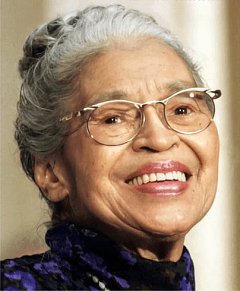
African-American lady Rosa Parks, nicknamed "The Mother of the Modern-Day Civil Rights Movement," was born in Tuskegee, Alabama, in 1913. Rosa spent most of her life battling for voting rights and desegregation and was involved in the Civil Rights movement, which helped to transform American society. She gained popularity in Montgomery, Alabama, for her opposition to racial segregation on public transportation. Rosa was accused of civil disobedience, found guilty of it, and sentenced after she refused to give up her seat for a white man. Regardless of where she lived, she always managed to find a way to stay active in the neighbourhood and express her opinions on social injustices. Rosa was well known for stating, "Do what is right," and she had a talent for doing it quietly and successfully. The most significant figures in black American history have actively stood looking at Rosa during her 92 years of living. She had received numerous awards for her role in bringing positive change when social inequity was prominent. Early lifeRosa Louise McCauley, known as Rosa Parks, was born on February 4, 1913, to parents James McCauley and Leona Edwards in Tuskegee, Alabama. Her mother worked as a teacher, and her father as a carpenter. She was a small child during her younger years as she was constantly ill. After her parents divorced, her mother brought her and her brother to Pine Level, a town in Montgomery, Alabama with her. Rosa spent the rest of her youth on the farm owned by her grandparents. Rosa didn't start going to a public school until she was eleven years old. Her mother had indeed tutored her at home. She enrolled in various academic and vocational courses at the Industrial School for Girls in Montgomery when she was eleven. She started laboratory school as part of her secondary education but had to leave early to care for her elderly grandma, so she never finished. She established deep roots in the African Methodist Episcopal Church, thanks to her upbringing in Montgomery. The Jim Crow laws of the South, which divided whites and blacks in practically every aspect of daily life, significantly impacted Rosa's childhood. It included education, transport, and even public bathrooms and drinking fountains. The white children who went to school were driven by bus to their school, but the black students had to walk to a different one. The only exception to this practice of segregation in public transportation was the requirement that black passengers sit separately from white passengers in the back of the bus. 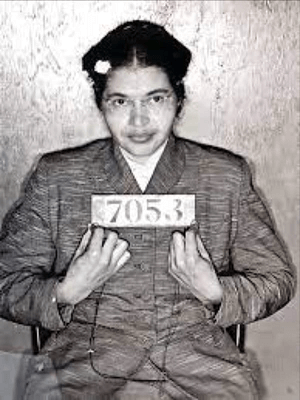
The Ku Klux KlanIn her autobiography, Rosa describes how her grandfather stood outside the farmhouse's front door, a loaded shotgun in his hand, watching as the Ku Klux Klan marched down their neighbourhood. Even though she found it frightening as a young child, this experience taught her much about the genuine discrimination against black people in American culture. She largely adheres to her firm belief in God and dependence on her church during difficult times. On the other side, she also remembers the several white people who were kind to her family and her growing up. She was aware of the attitudes held by most Southern whites, but she refused to let them change how she saw moral empathy. Rosa Louis McCauley married Raymond Parks in a small ceremony held at her mother's house in Montgomery, Alabama, in 1932. Her husband pushed Rosa, a barber in Montgomery, to complete her high school studies and receive her diploma, which she did in 1933. After just three tries, she could also register to vote. Rosa fought alongside her husband in their fight to collect money for the "Scottsboro Boys'" defence, a group of black men who had been unfairly accused of raping two white women. After years of being encouraged by her husband, who was a member, Rosa finally joined the NAACP in 1943 and was appointed Edgar Nixon's secretary. For 13 years, Rosa worked as a volunteer for the NAACP. Rosa started working at the Maxwell Air Force Base in 1944. Segregation was not permitted because the air force base was considered federal property. Rosa's attitude on civil rights changed due to experiencing equality for the first time. Rosa herself said: "You could say Maxwell opened my eyes up." Socially-Enforced Laws in 1955After returning to Montgomery, Rosa accepted a position at the Montgomery Fair Department Store. Rosa took the bus to and from work every day. Public transportation was still separated in the South. This meant that only white people were allowed to sit in the front four rows of the buses. The far back of the bus comprised the "coloured" sections. The driver was free to move the movable hoardings that designated the sections at any time to accommodate more or less white people. Black passengers had to move, stand, or get off the bus if white passengers were waiting to board, and there was no room left. They were not allowed to sit beside a white person across the path. Black people had to board from the back to avoid passing a white passenger in front of the bus. The bus would occasionally leave before the black passenger could reach the door, leaving them standing on the side of the road after paying the driver. 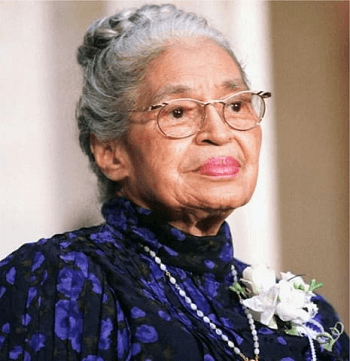
The attempts to abolish the segregation laws had been numerous and ineffective. The most well-known of these involved Claudette Colvin, a 15-year-old Montgomery, Alabama, girl. Nine months before Parks' conviction, Claudette had also been detained for the same offence. She had neglected to give a white man her seat. She said that forcing her to move would violate her constitutional rights and that she shouldn't have to. Colvin actively participated in the NAACP Youth Council, and Rosa Parks advised that association. It was later uncovered. Colvin later discovered that she was pregnant, and E.D. Nixon decided that because her unwed pregnancy would weaken the cause, she would not be the ideal image for a civil rights movement. Rosa Parks and other members of the black community have long protested that these and other aspects of discrimination were unfair. When Parks entered the bus through the front door in 1943 because it was raining, it was the first of many disputes she would have with the bus drivers. She was forced to get off the bus and board it again through the back door by the bus driver. She dropped her bag as she stepped out the bus's front door. She partially sat in a seat reserved just for white people as she knelt to pick it up. Rosa barely managed to exit the bus before the driver raced off along the road at this point because the driver was in a state of rage. Rosa had to walk five miles home in the rain. Emmett TillThe murder of Emmett Till, a 14-year-old black boy, gravely disturbed Rosa, as it did many other African Americans. He was killed by white men. It just happened that this murder took place four days before Rosa was about to be arrested on the bus. She was still thinking about the murder as she staged her rebellion that day. Rosa's Bus Incident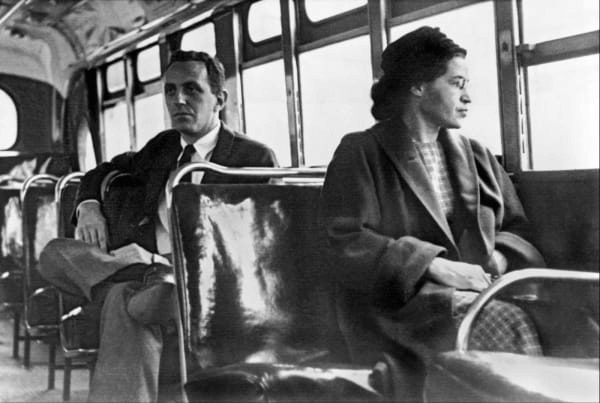
The final blow was when Rosa took the bus home from her work at the Montgomery Fair Department Store on December 1, 1955. James F. Blake, the bus driver who had accidentally thrown her off the bus 13 years back, was in charge of the bus on that particular day. Rosa stepped onto the bus, paid her fare, and took a seat behind the white people's allocated seats in the first row. This was almost in the centre of the bus and the eleventh row. The seats designated for white people only started to fill up as the bus continued on its route. The bus driver walked toward the back of the bus and ordered that four black passengers give up their seats to the white passengers. When all the seats were occupied, three white passengers were still standing. The fact that Mrs Parks was seated in the first row of the section reserved for blacks is an important and frequently misunderstood aspect of this incident. Rosa described in her autobiography how she only wanted to defend herself and her rights while the driver was demanding things. When the bus driver questioned her about it, she replied that she did not feel like getting up and moving. Rosa merely shifted position toward the window seat as the three black men in her close surroundings moved. The bus driver then called the police, who came and took Rosa into custody. It is crucial to remember that Montgomery, Alabama, had approved city legislation in 1900 allowing vehicles to separate their passengers based on race. They could assign particular seats as needed. However, if the vehicle became overcrowded, the rule prohibited forcing passengers to vacate a seat or stand. Due to time and growing discrimination, drivers now have the practice of ordering black passengers to move, stand, or leave the bus if a white passenger needs a seat. Rosa was detained as a result of speaking up. Even though she had not officially broken the law, the police accused her of breaking the segregation law section of the Montgomery City Code. Her asking the officer why the police would participate in such unethical behaviour as he was escorting her from the site was the ironic element of her detention. When he replied, "I don't know, but the law's the law, and you're under arrest," she was amazed by his response. According to Parks' autobiography, as she was being driven away by the police, she decided that this would be the last time she would be subjected to such humiliation. Death and FuneralIn 2004, Rosa was diagnosed with advanced dementia 2004 and passed away on October 24, 2005. All city buses in Montgomery and Detroit had their front seats decorated with black ribbons three days following Rosa's demise. These seats remained so until Rosa was buried. The lengthy trip to the grave served as a recap of everything she had stood for and held during her life. Her body was returned to Montgomery by flight on October 29, 2005, and then transported to St. Paul African Methodist Episcopal Church by horse-drawn coffin. She lay in repose at the church until the next morning, when a funeral ceremony was performed in her honour. At the service, Condoleezza Rice, the secretary of state, delivered a speech. This speech featured a key insight when Rice said that Rosa's contributions in creating the way for future inspirational black leaders to succeed were responsible for her career. 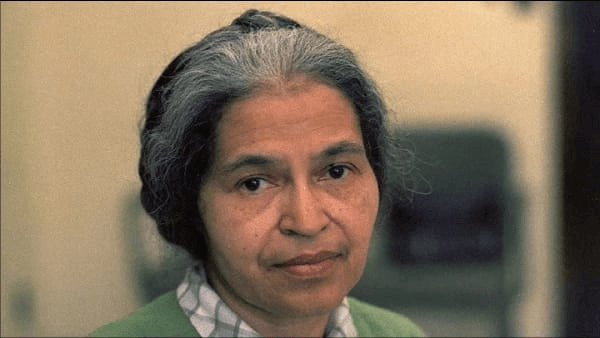
That same evening, Rosa's body was taken to Washington, D.C., where a bus similar to the one she made her iconic stand-in took her to the U.S. Capitol Rotunda. More than 50,000 people witnessed her lying there in tribute until the funeral ceremony at St. Paul AME in Washington, D.C., on October 31, 2005. She was transported back to Detroit to the Charles H. Wright Museum of African American History, where she laid in repose for two days following the funeral service in Washington, D.C. Rosa's funeral service was performed at the Greater Grace Temple Church in Detroit, Michigan, on November 2, 2005. Thousands of people lined the route of the funeral procession, standing in Rosa's memory and releasing white balloons as the procession passed. After the coffin was transported to the cemetery by horse-drawn hearse, the funeral lasted more than seven hours. Before it was delivered, a Michigan National Guard army placed a flag over the coffin, and at the cemetery, they presented it to Rosa's niece. President George W. Bush commanded that all flags in the U.S. Capitol and other public spaces, domestic and foreign, be flown at half-mast on the day of Rosa's funeral. By allowing her body to rest in so many famous locations, Rosa Parks was given great honour and gave many people the chance to pay their respects to this woman who had done so much to influence the future of the American people. Adding to this, the sheer number of people who arrived at each memorial service and viewing and the thousands of people on the procession route are evidence of the many lives that Rosa Parks touched during her 90 years on earth.
Next TopicUmar Riaz
|
 For Videos Join Our Youtube Channel: Join Now
For Videos Join Our Youtube Channel: Join Now
Feedback
- Send your Feedback to [email protected]
Help Others, Please Share










